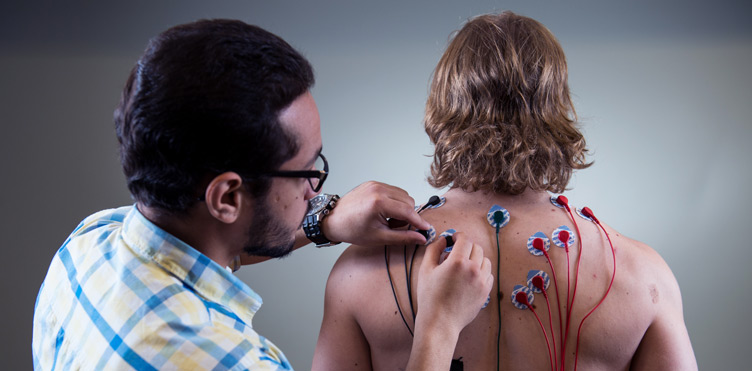
For 50 years, the Institute has been producing leading research and real-world solutions for patients. We have extensive research facilities for data collection and analysis, as well as for testing prototypes and new signal processing methods. Just some of our ongoing projects are listed below.
IBME’s Centre for Adaptive Rehabilitation Engineering provides a suite of equipment and facilities that is unique across Canada, ranging from dynamic weight-reducing harnesses to tilting treadmill virtual reality to eye-tracking and EEG recording – all in the same centre. These technologies enable us to explore research ideas to personalize rehabilitation and make it more efficient, with an end goal to provide clinicians with best practices they can use in their own clinics. The resources also make a great research platform for our research into basic human movement and cognition, gaming interaction research, and much more!
The IBME has a long history of innovation within the field of pattern recognition: a field that makes control decisions for prostheses based on signals from amputees. We are currently exploring several areas of research:
• How do people interact with pattern recognition? (Drs. Englehart, Scheme and Sensinger, with funding from NSERC)
• Developing better and more confident dynamic classifiers (Dr. Scheme, with funding from NSERC, NBIF and NBHRF)
• Classification of movement for lower-limb prostheses (Drs. Englehart and Stevenson)
Exoskeletons have the potential to provide rehabilitation and mobility for patients with spinal cord injury, stroke and other disabilities. We are exploring several areas of research:
• Impact of exoskeletons on joint biomechanics (Drs. McGibbon, Chester and Kuruganti, with funding from Mitacs, NBIF and B-Temia)
• Design of exoskeletons (Drs. Sensinger and Losier, with funding from NBHRF)
• Nonlinear control of exoskeletons (Drs. Sensinger, Carretero and Dubay, with funding from NBHRF)
Doctors and insurance companies are increasingly relying on quantitative outcome measures to inform their policies and decisions. Developing appropriate tools and concepts to ensure accuracy and sensitivity is an important area of research, including:
• Design of a suite of tools to measure spasticity (Dr. McGibbon, with previous funding from AIF)
• Design of a suite of tools for peripheral nerve interface measures (Dr. Sensinger, with funding from DARPA)
• Design of low-cost tools to assess balance and lower-limb rehabilitation (Dr. Scheme, with funding from NBHRF and NBIF)
• Longitudinal database of pain and surveys (Dr. Biden)
There are always a variety of pilot projects and other initiatives that we explore with our collaborators. This list is constantly changing as we strive to remain innovative. A sample of these activities includes:
• Industry partnerships, such as assessment of biomechanics and electrophysiology while using SmartPods desks (Dr. Scheme, with funding from NBIF)
• Medical technology startups, such as the Drs. Orders cloud-connected smart cane (Dr. Scheme, with funding from NBHRF & TME)
• Design of low-cost prosthetic hands (Drs. Biden and Sensinger)